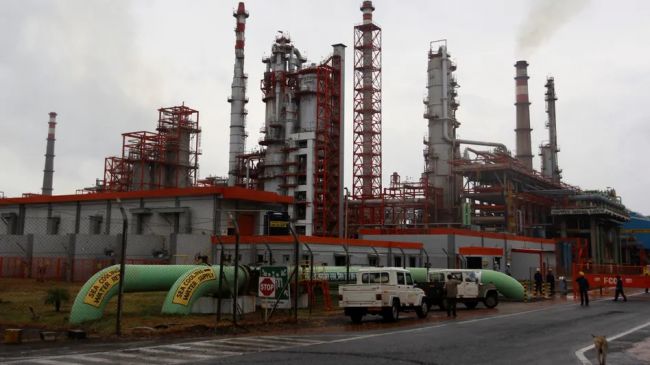
Oil prices soared on news from the US
By Rhod Mackenzie
Just a week ago, it was reported that oil inventories at the main US oil storage facility in Cushing, Oklahoma, had fallen to the level of 22.9 million barrels, very close to the critical operating minimum of 22 million barrels.It is now said that critical minimum level has been reached and surpassed - there are no more than 22 million barrels of oil left in the 315 reservoirs of the Cushing storage facility. Over the summer and into the first month of autumn, reserves have almost halved from a two-year high of 43 million barrels in June, according to the authoritative American Petroleum Institute. It should also be borne in mind that that is last week's data and that there are now well under 22 million barrels of "black" gold in the largest oil storage facility, not just in America but in the world.
Incidentally,the commercial oil reserves in the United States fell by 2.2 million barrels, or 0.5%, to 416.3 million barrels between 15th and 22nd September, according to the latest weekly report from the Energy Information Administration.
The dynamics of oil prices, as you can imagine, are the opposite - as reserves fall, they rise. WTI oil price is now more than $93 a barrel. Yesterday in New York, a barrel of WTI was trading at $93.68 and Brent at $96.55.
According to reports, oil stocks in Cushing have been falling so fast because of high demand from oil refineries with no less high external demand for American oil.
"Oil levels (in Cushing) are already at historic lows and this is pushing the price of WTI oil higher and higher in an already tight market where demand is outstripping supply," said Vortexa analyst Rohit Rathod, commenting on the situation that has developed in late September.
The oil stockpiles at Cushing have now become an important factor in high prices being maintained, not only because they have been reduced to the critical minimum level, as 22 million barrels is still a fairly significant volume, but also because their low level makes it technically increasingly difficult to get the oil out of the tanks.
"If the oil in the reservoirs is allowed to get too low, it can become viscous and very difficult to extract," explains Carl Larry, a director at international consultancy Wood Mackenzie, "and what you do get out cannot be used."
"Now we can say that with certainty that Cushing is dry," says Amrita Sen, said the head of research at Energy Aspects.
Preventive work is now starting at American refineries. Refiners will need less oil, and levels in the Cushing storage facility could rise by several centimetres. However, it is unlikely that reserves will be significantly replenished, as the high demand for fuel at many refineries will allow the preventive maintence work to be carried out at an accelerated pace. If the level of oil in the reservoirs does not increase significantly during the period of the maintenance, the price of a barrel of WTI oil could move to close to $100.
Incidentally, in 2014, oil inventories at Cushing did fall to 20 million barrels, but at that time the United States was not yet the largest exporter of oil and fuel, so the reserves were quickly replenished. Now the situation is different - at current export levels, it is much harder to rebuild reserves.
